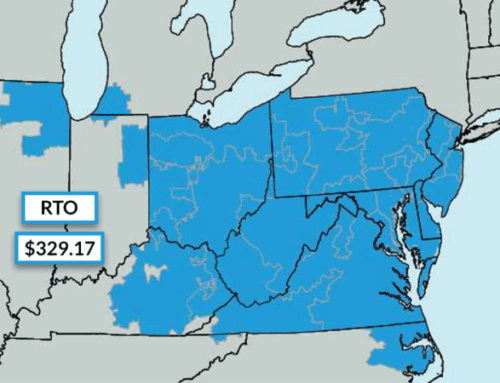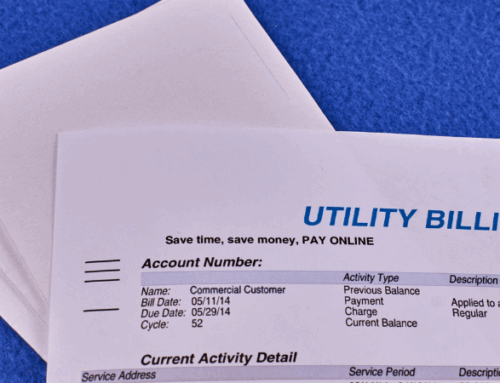Whether you are a residential or commercial customer located in a deregulated energy state or regulated state, energy tariffs play an important role in your total costs. This article aims to define energy tariffs, how they are calculated, and how to take advantage of energy tariffs to cut costs.
What Is An Energy Tariff?
Energy tariffs are documents published by local utility companies that determine how the energy company charges their customers. These tariffs define specific equations and billing amounts that dictate how an electricity and/or natural gas bill is calculated. There are usually specific rate tariffs for residential and commercial customers. And, in most utilities, there are several different tariff variations for each customer type.
Let’s explore utility tariffs in more detail.
Energy Rates vs. Tariffs: Are They Different?
Energy rates and energy tariffs are quite different. Energy rates are specific dollar amounts that customers pay for each unit of electricity or natural gas they demand and consume. Tariffs, on the other hand, define those specific charges and how they apply to different types of customers. Read on to learn more about the differences between energy tariffs and rates.
Energy Rates
Energy rates are usually comprised of two categories: distribution charges and supply charges. When evaluating the anatomy of an electricity bill, you will notice that the bill is separated into these two sections. Most utility companies, and retail energy suppliers, post a specific rate per kWh or CCF for supply charges. And, utility companies publish a specific rate per kW for distribution or demand charges.
Energy rates are simply the total dollar amount ($/kW or $/kWh) that a customer pays. Energy tariffs, however, determine how energy rates are calculated.
Energy Tariffs
Energy tariffs are published by utility companies and define how energy rates are calculated for both distribution and supply. For example, an energy tariff might define the following for a commercial customer on a time-of-use tariff schedule:
- On-Peak Distribution Rates: $15/kW for the first 100 kW
- On-Peak Distribution Rates: $10/kW for amounts over 100 kW
- Off-Peak Distribution Rates: $5/kW
Energy tariffs determine the total energy rate a customer will pay for specific periods of time and for specific volumes.
Types Energy Tariffs
Energy tariffs vary drastically depending on the utility market and state since each utility company sets its own tariff schedules. Utility tariffs are affected by the energy supply composition of a certain market, the cost of the wholesale energy market, state utility board regulations, and other factors. Let’s explore the different types of tariffs:
Fixed Tariffs
Fixed utility tariffs are billing schedules that charge customers a certain fixed dollar amount for each unit of energy consumed. Fixed tariffs are popular in both regulated and deregulated energy markets. These fixed tariffs, however, can change quarterly, semi-annually, or annually.
Variable Tariffs
Variable rate tariffs follow the ups and downs of the index energy market. These tariffs are tied to the wholesale price of energy and typically are calculated on a monthly basis based on market settlement prices. Variable tariffs are found in both regulated and deregulated markets.
Hourly Tariffs
Hourly energy tariffs are another common rate schedule for commercial customers. These tariffs are calculated based on the hourly price of energy multiplied by the customer’s usage for that given hour. These tariffs are popular for larger commercial and industrial accounts and are found in both regulated and unregulated markets.
Secondary Power
Secondary power tariffs are used to calculate commercial electricity distribution costs. These tariffs govern commercial customers located in places where the utility company owns and maintains the power transformer that supplies electricity to the property. Secondary power schedules are quite popular as utility providers commonly manage their own transformers for customers.
Primary Power
Primary power tariffs, like secondary tariffs, are used to calculate commercial electricity distribution costs. These tariffs also govern commercial customers, however, they are reserved for customers who own and maintain their own power transformers. Larger industrial and commercial customers can benefit handsomely by owning their own transformers as primary power schedules are much less expensive than secondary rate schedules.
Time Of Use Tariffs
Time of use tariffs, also known as on-peak and off-peak tariffs, are commonly found in regulated states where energy shopping is not an option. These rate schedules provide options to commercial customers who are looking for flexibility. Time of use energy tariffs require customers to pay a certain rate for energy used during on-peak periods while paying a lesser rate for energy used during off-peak periods. These types of schedules are very popular in states like California and Nevada.
Choosing The Right Tariff
Certain types of customers do not have a choice to choose a utility tariff. Residential customers, for example, are usually bound to a standard residential tariff plan. And in certain states, small commercial customers are also bound to their assigned utility tariff.
In some instances, however, commercial and industrial customers have the option to choose an energy tariff that suits their needs. But, not all customers can qualify for every tariff published by the utility company. Utilities usually require customers to meet certain energy usage thresholds in order to be eligible for certain tariffs.
Having an energy consultant or energy broker in your corner can be a big advantage when choosing the right tariff plan. In fact, you might even discover through a utility bill audit that your business qualifies for a less expensive tariff that can save you money. Contacting an energy expert is your best bet to determine your eligibility options as tariff schedules can be complex to understand.
Tariff Savings Example
Electric utility companies within the First Energy territory in Pennsylvania have primary and secondary power tariffs available to commercial and industrial customers. Most customers are placed on the secondary tariff when first setting up their accounts; however, if they are able to meet certain usage requirements, the primary schedule is made available to them.
In these utilities primary power can be as much as 50% less than secondary power distribution rates. That means a customer spending $10,000 per month in electric delivery costs could save up to $60,000 annually by switching to primary power.
Looking For A Tariff Analysis?
In conclusion, understanding energy tariffs is a critical component to controlling energy expenses at your business. As tariffs are constantly changing, staying on top of the latest available plans and making sure your business is on the right tariff could mean thousands of dollars per year in costs. Our team of expert energy advisors can analyze your business’s energy usage and local utility tariffs to ensure that you are maximizing your energy savings. Contact our team today!



